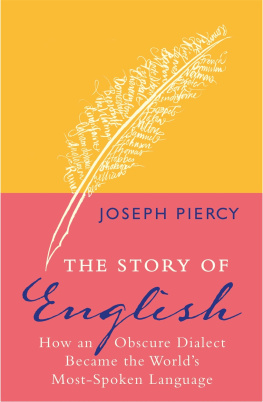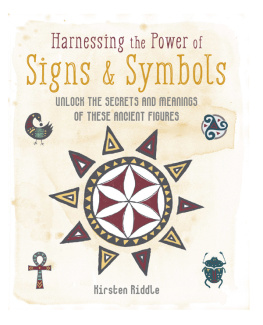
First published in Great Britain in 2013 by
Michael OMara Books Limited
9 Lion Yard
Tremadoc Road
London SW4 7NQ
Copyright Michael OMara Books Limited 2013
All rights reserved. No part of this publication may be reproduced, stored in a retrieval system, or transmitted by any means, without the prior permission in writing of the publisher, nor be otherwise circulated in any form of binding or cover other than that in which it is published and without a similar condition including this condition being imposed on the subsequent purchaser.
A CIP catalogue record for this book is available from the British Library.
ISBN: 978-1-78243-000-1 in hardback print format
ISBN: 978-1-78243-196-1 in paperback print format
ISBN: 978-1-78243-073-5 in ePub format
ISBN: 978-1-78243-072-8 in Mobipocket format
www.mombooks.com
Cover design by Ana Bjean evi
evi
Designed by Ana Bjean evi
evi , typeset by www.glensaville.com
, typeset by www.glensaville.com
For Polly and Joanna
By the Same Author
The Story of English
This Book Will Make You Think
(as Alain Stephen)
CONTENTS
PART ONE:
PART TWO:
PART THREE:
PART FOUR:
PART FIVE:
In our thinking we make use of a great variety of symbol-systems linguistic, mathematical, pictorial, musical, ritualistic. Without such symbol-systems we should have no art, no science, no law, no philosophy, not so much as the rudiments of civilization: in other words, we should be animals.
Aldous Huxley
In his foreword to Jiddu Krishnamurtis philosophical work The First and Last Freedom (1954), the science fiction novelist Aldous Huxley makes a clear distinction between the explanatory symbols used in science well chosen, carefully analysed and progressively adapted and those adopted by religious and political groups for the calculated exclusion of outsiders. Arguing that such symbols are often accorded a level of respect they dont deserve, he goes so far as to say that, as the history of our own age makes so abundantly clear, symbols can even be fatal.
It is important to remember that Huxley was writing in the aftermath of the Second World War, a period in which political and religious groups had rallied against one another beneath flags and logos of various descriptions, but his point remains just as salient today, as humankind enters a post-industrial era ever more dominated by seismic leaps in technology. New signs, such as the Bluetooth symbol, and new meanings for old signs, such as the Twitter hashtag, are constantly appearing and changing the way in which we communicate with each other about the evolving world in which we live.
But what is it that drives societies and cultures to construct symbol systems in the first place, with all the helpful yet potentially dangerous information they represent? Such systems proliferate today as much as they ever have, but it is only in the last century or so that philosophers, in a dense and often impenetrable field of study, have given considerable thought to what it all means. The Swiss philosopher Ferdinand de Saussure contended that the meaning ascribed to particular signs is, at root, quite arbitrary: the physical symbol has no direct relation to the thing it is meant to represent. It is this disconnect that allows, say, the swastika to be transformed from an ancient symbol of well-being to the insignia of the repressive Nazi party. Anyone presented with a swastika image nowadays perceives a dark and hateful message entirely unrelated to its original meaning, but all the symbol itself really is is a simple geometrical pattern.
The search for meaning behind the signifiers of human existence is intricate and difficult, and to avoid getting too embroiled in the complexity of these theories (and counter-theories) I have included a bibliography and suggestions for further reading at the back of this book. Roland Barthes and Umberto Eco have made particularly interesting additions to Saussures line of thinking.
Above all this book is an attempt to look at some of the common (and less common) signs and symbols that we see around us every day, and to trace their historical backgrounds and uses as tools of human communication and understanding. The text is structured thematically, taking as a point of departure elements from earlier civilizations, such as Palaeolithic cave paintings and Ancient Egyptian hieroglyphics. Subsequent sections address more abstract signs and symbols, including familiar political and ideological emblems, symbols relating to concepts of value and exchange, cultural totems of identity and the increasing use of symbols in technology and communication.
The choice of the symbols is arbitrary and miscellaneous quite pointedly so. There are certainly numerous other signs and symbol systems that merit analysis and study but I have selected those that have had an enduring impact on human society and culture, or which may well prove to be of importance in the future. As technological advances continue to streamline the pace of life, and to bring different cultures and languages closer together, the use of signs and symbols can only become more widespread. While we ought to bear in mind the warnings issued by Aldous Huxley in the mid-twentieth century, it is exciting to see and speculate on where our increasing reliance on non-verbal communication will take us.
Joseph Piercy
PART ONE
E ARLY S IGNS
AND S YMBOLS
In the rough, a symbol is a sign that stands for something and something must exist for the symbol to symbolise.
Alfred Korzybski
S ince the earliest known civilizations, humankind has created signs and symbols. But although we have clear evidence of primitive mans attempts to represent his world through cave paintings and rock art inscriptions, we do not know for certain the motivation behind these creations. Nonetheless, they remain important as a starting point for any examination of the use of signs and symbol systems. Similarly Egyptian hieroglyphics, though in essence a form of alphabet, rely on the use of pictograms to convey semantic meaning and communicate ideas, all of which places them firmly in the realm of the symbolic. Medieval heraldry is also an ideographic system and interesting for its primary purpose as a means of constructing symbolic identities by transposing human characteristics on to animals.

The oldest surviving evidence of the human capacity to reflect or attempt to record the nature of life and consciousness, and to communicate through visual and symbolic imagery, can be found in Palaeolithic cave art.
In December 1994, three French speleologists (cave explorers) led by Jean-Marie Chauvet were studying geological aspects of the Ardche valley in southern France when they happened upon a series of interlocking chambers previously hidden by rock falls. The floor of the chambers contained animal bones, prints, fossilized remains and clear evidence of human occupation. As they ventured further into the complex, Chauvet and his colleagues discovered hundreds of well-preserved paintings and engravings on the walls of two vast chambers linked by a short passageway. The first chamber contained images painted mostly in red dyes, whereas the majority of the images in the second chamber were predominantly marked in black charcoal and ochre.
Next page














 evi
evi
